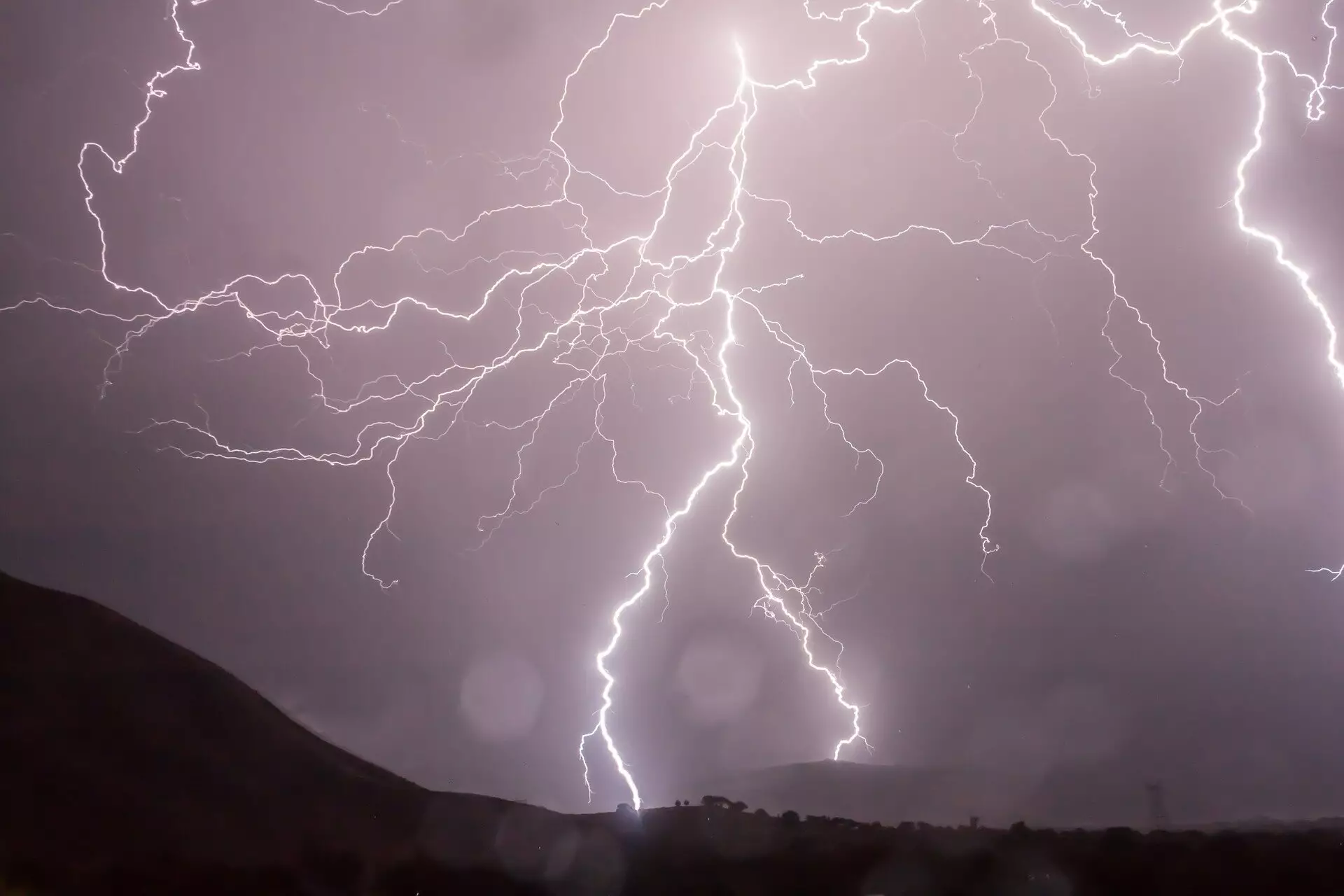Boreal forests play a crucial role in carbon storage, making them of global importance. However, new research suggests that lightning, fueled by climate change, is becoming the dominant cause of wildfire ignition in these forests. Led by Vrije Universiteit (VU) Amsterdam, in collaboration with other institutions, the study “Extratropical forests increasingly at risk of lightning fires” sheds light on the increasing frequency of lightning ignitions and their potential consequences for intact extratropical forests. In this article, we delve into the findings of the study and discuss the alarming implications for these forests and the global climate.
Utilizing machine learning techniques, the research team was able to predict the primary sources of wildfire ignitions worldwide. By analyzing reference data from seven world regions, they determined that 77% of burned areas in intact extratropical forests were ignited by lightning. This contrasts starkly with fires in tropical regions, which are predominantly caused by human activities. Intact extratropical forests, known for their low levels of land use and small human populations, are primarily found in the remote boreal forests of the northern hemisphere. Hence, the study establishes a global perspective on fire ignition sources for the first time.
To investigate the impact of climate change on lightning frequency, the researchers turned to climate models. The results revealed that for every degree of global warming, lightning frequency in intact extratropical forests could increase by 11 to 31%. This means that as the planet warms, the risk of wildfire ignitions intensifies. Lightning fires possess distinctive characteristics, such as larger sizes, greater intensity, and a tendency to occur in remote areas and during periods of extreme fuel dryness. The team’s earlier research already highlighted the growing frequency and intensity of fire-prone weather, indicating an alarming concurrence of forest flammability and lightning strikes.
Extratropical forests are pivotal for carbon storage, harboring vast amounts of carbon in vegetation and permafrost soils. Approximately 91% of these forests in the northern hemisphere rest atop permafrost. However, when fires occur in these regions, they release considerable amounts of carbon dioxide (CO2) and other greenhouse gases, surpassing emission levels from other regions. While these forests only cover about 1% of Earth’s land surface, they contribute more than 8% of total CO2 emissions from fires worldwide. Disturbingly, under a moderate emissions scenario, it is estimated that fires may amplify greenhouse gas emissions from permafrost thaw by 30% by the end of the century.
Dr. Matthew Jones, a Research Fellow focused on the carbon cycle and climate change, emphasizes the vulnerability of extratropical forests in the face of a warmer, drier climate and an increased likelihood of lightning ignitions. The combined effects of these factors pose a significant threat to the carbon stores within these globally vital forests. The research gains added urgency considering Canada’s record-breaking fire season in 2023, where fire emissions exceeded the 2003-2022 average by more than four times. Initial reports attribute these fires to widespread lightning ignitions. Dr. Thomas Janssen from VU, the study’s lead author, draws attention to the link between extreme fire seasons and climate change, citing previous record-breaking events in the Siberian boreal forests.
The authors of the study caution that the greenhouse gas emissions resulting from fires exacerbate the problem of climate change. As the climate warms, the likelihood of fires increases, leading to amplified emissions of greenhouse gases. This reinforcing feedback loop is particularly concerning in boreal forests, many of which rest upon carbon-rich permafrost soils. The loss of these soils due to fire can take hundreds of years to recover, resulting in a severe impact on the global climate.
Dr. Jones emphasizes the critical role of reducing the risk of wildfires by curbing global warming. Every tenth of a degree of warming avoided directly translates to a reduced risk of wildfires. The study’s findings underscore the urgency and importance of taking immediate action to mitigate climate change and protect the invaluable carbon stores within boreal forests. Without intervention, the escalating frequency of lightning ignitions, exacerbated by climate change, threatens to destabilize these carbon sinks, further intensifying the global climate crisis.
As the frequency of lightning ignitions rises with climate change, intact extratropical forests face an increasing threat of wildfires. These forests, crucial for carbon storage, are vulnerable to the combined effects of a warming climate and heightened lightning strikes. The research highlights the urgent need to address climate change and protect the carbon stores within these forests to mitigate the adverse impacts on the environment and ensure global climate stability.


Leave a Reply